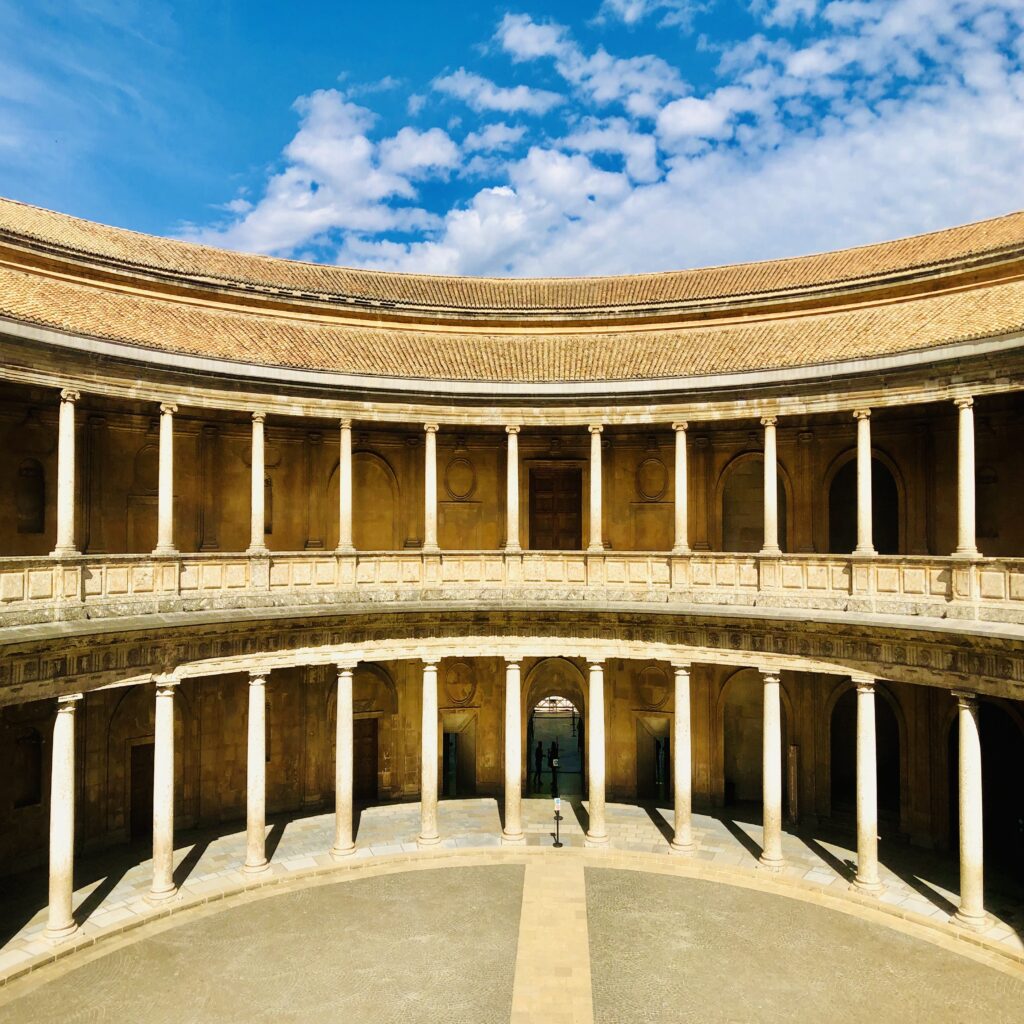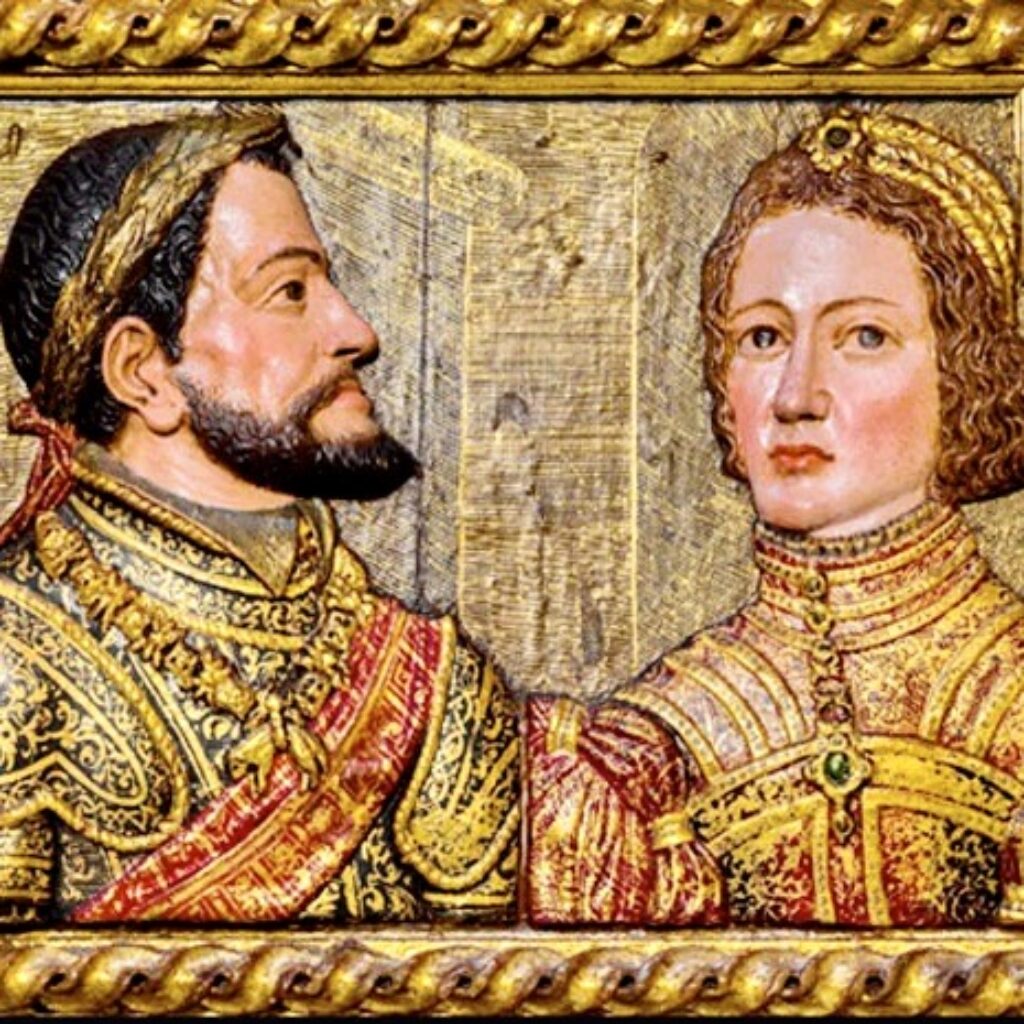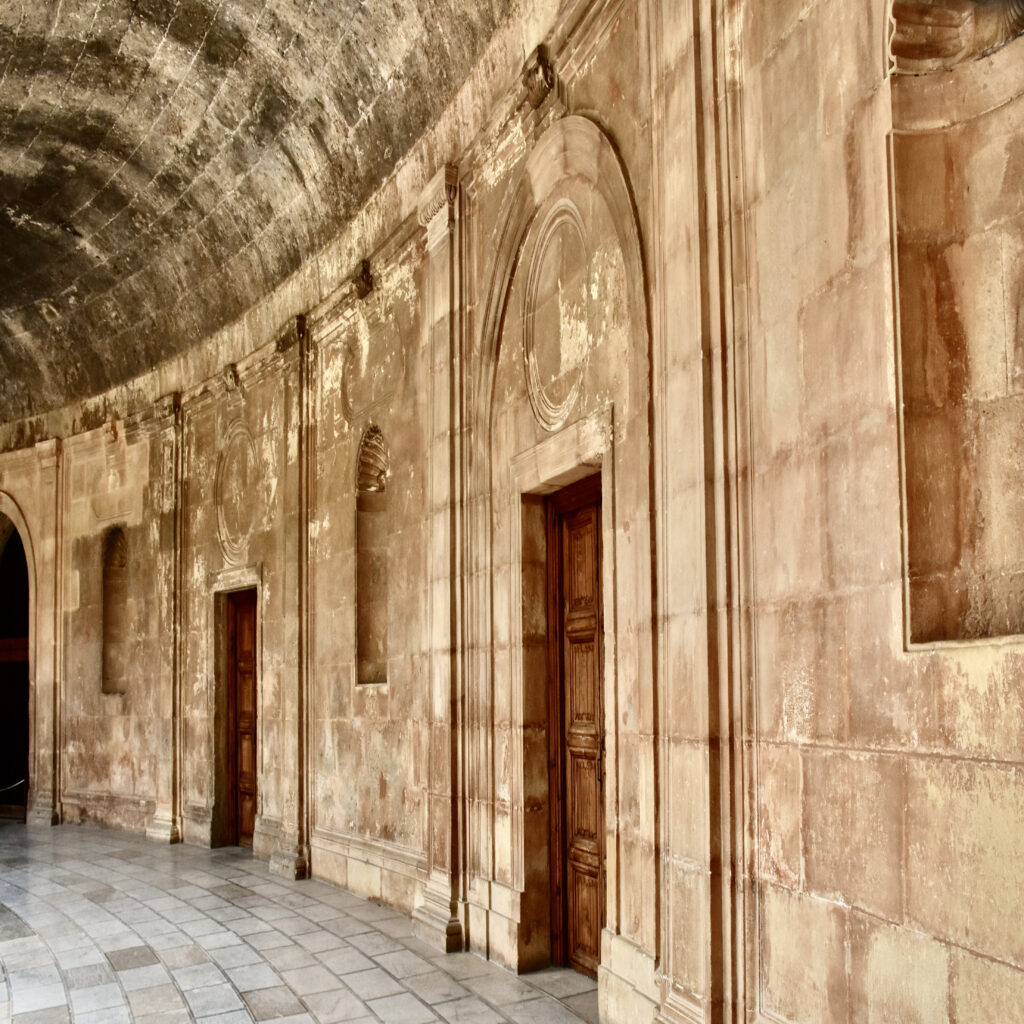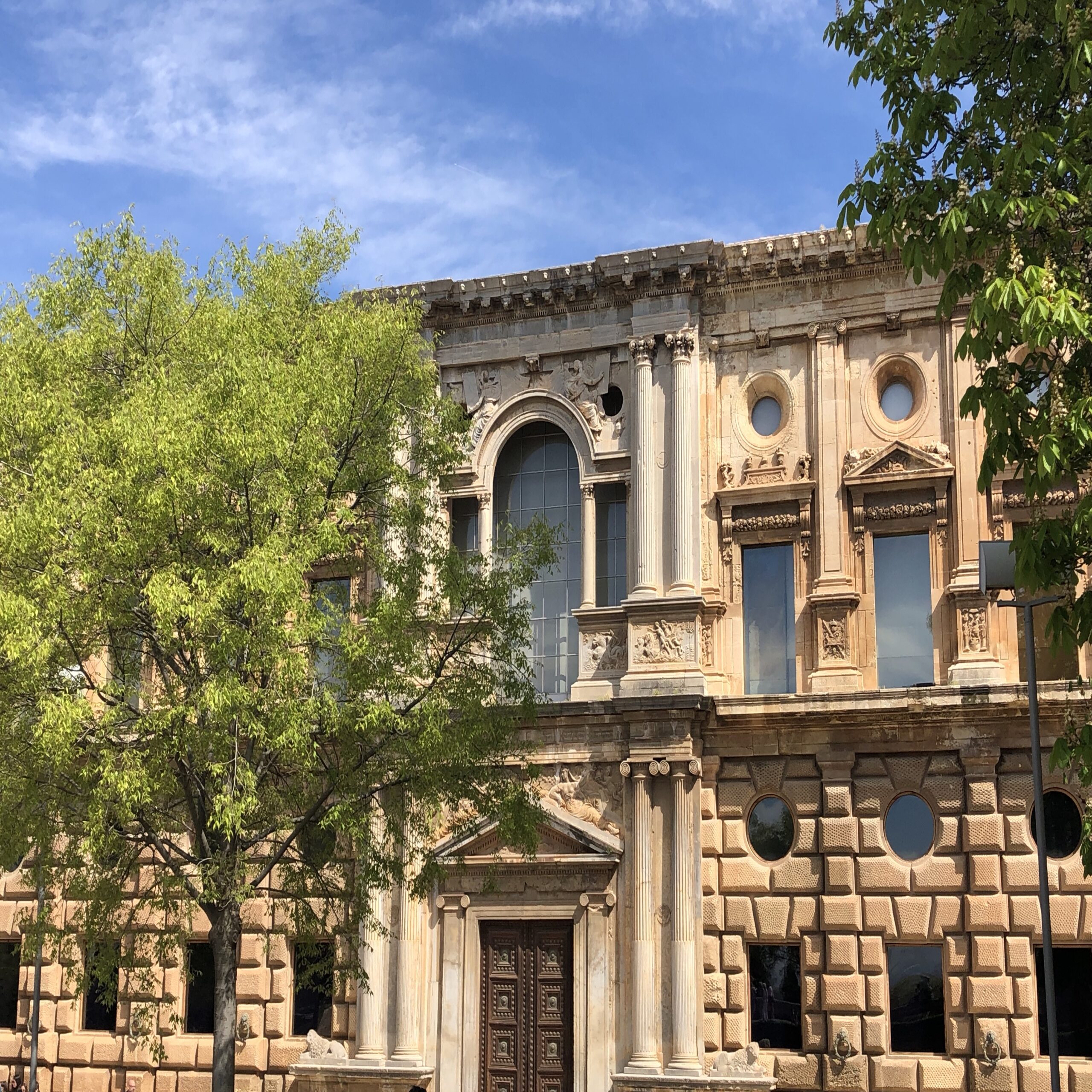Table of Contents
Charles V Palace in Granada
Charles V Palace is undoubtedly one of the most amazing buildings in the Andalusian city of Granada.
This spectacular Renaissance building, located on the same hill as the Alhambra...
Yes, you read that right.
A Renaissance palace inside a Nasrid palatine city, it can’t be more peculiar, can it?
In fact, it was called the “New Palace” to differentiate it from those of the Nasrid period, called “Old Palaces”.
Although Emperor Charles V moved to the Alhambra to spend his honeymoon during the summer of 1526, once in Granada he decided to stay longer..
Therefore, he planned for a Palace, larger in size and comfort than the Moorish Palace, yet connected to it, and decided to establish it as the Empire’s center stage.
Thus one of the Renaissance’s finest works outside Italy, and the first royal palace of the Spanish monarchs, was born.
However, this is not the only reason why Charles V Palace has become such a special and endearing landmark in Spanish history.
Charles V Palace, the history

Charles V Palace began building in 1533 by the great painter and architect Pedro Machuca, or Petro Spagnolo, disciple and assistant to Michelangelo in projects like the Sistine Chapel.
At his death, on June 4, 1550, was followed by his son Juan Machuca, and later on Juan Orea, and finally the architect Francisco Prieto Moreno, just to mention some of them.
The palace´s design, based on the perfect forms of the square and the circle, echoes the imperial Rome, to which Charles V felt so attached.
Charles V Palace, is a square stone building, 63 m. long and 17.40 m. high on the main facades, and inside a circular courtyard, unparalleled so far.
The inner circular courtyard, 30 m. in diameter, known for its magnificence and luxury, is one of the most beautiful masterpieces of the Renaissance.
Surrounded by 32 Tuscan and 32 Ionic columns, made from sediments of a large local rock.
Symbolizing strength, firmness and nobility, making it a unique building.
The courtyard is imaginatively divided with a diagonal line in two.
One is dedicated to the emperor, the other to the empress.
This outstanding creation symbolizes the victory of the empire over the last Muslim Kingdom of the Iberian Peninsula, and also universal peace.
Created as a new Ara Pacis (Altar of Peace), Charles V Palace amed to end war and bring universal peace.
Although its construction was halted in 1637, the architect Leopoldo Torres Balbas began its restoration in 1923, which lasted until 1970.
Since 1958 it has housed the Museum of Fine Arts of Granada and, since 1994, the Museum of the Alhambra.
However, the greatest of its attractions is to have witnessed one of the most beautiful love stories in history.
The passionate love of Charles V and Isabella of Portugal.
Charles V Palace, the imperial love story in Granada

Only thirty-four years have passed since Boabdil and his mother Aisha Al Horra, last Queen of Moorish Granada, left the Red Fortress and flee to exile.
A young King Charles V , newlywed to Isabella of Portugal, visits Granada and, since the Royal Alcazar was not suitable for the court, Charles V decided to buid a new Palace, worthy of his beloved wife.
Although at first it was an arranged marriage, since Charles V and Isabella met they loved each other, to death.
And the root of this great love blossomed in Granada, literally…
To symbolize their eternal love, Charles V decided to bring Isabella carnations from Persia, until then unpublished in Spain.
The empress was delighted and planted them by the thousands in the gardens of the Alhambra.
From then on, the carnation and its cultivation spread throughout the Mediterranean.
It became Spain’s national flower, and Isabella has been known ever since as the Carnation Empress.
Charles and Isabella saw their love explode in splendor in Granada.
Their honeymoon, the conception of the future emperor Philip II and their joyous marital bliss.
But not only Charles and Isabella made the most of their stay in Granada.
The entire city and its Alhambra were reborn thanks to the imperial couple’s stay.
The ancient Muslim capital was transformed into a modern Christian Renaissance city.
Thus arose the palace of Charles V; the Cathedral; the Royal Hospital, initiated by the Catholic Monarchs;the Royal Court and the Chancery´s reforms;University of Granada’s foundation, including colleges and churches.
Granada, just as it had been in 1492, once again became the center of European history.
Even today, the Charles V Palace continues to offer visitors the opportunity to enjoy life’s greatest pleasures, such as art, music and dance.
Charles V Palace, home of Andalucia’s top visited museum

On the southern side ground floor of Charles V Palace we find Andalusia’s most visited museum, The Alhambra Museum.
Considered as the best collection of Nasrid and Mudejar art in the world.
Its 7 exhibition halls invite you to go back in time and delve into Hispano-Muslim art and culture that miraculously survived across centuries.
After the Reconquest, the Catholic Monarchs, Ferdinand and Isabella, safeguarded all the objects they found valuable in the Alhambra palaces.
And those deemed invaluable to the Court were used for decorating the royal chambers or kept inside the palaces.
By the end of the 16th century, Alhambra was left to its fate.
Charles V palace became a military headquarters during the Napoleonic war, when two of the towers were destroyed.
Not until 1870 did Alhambra’s destiny turn around, when it was declared a National Monument.
And since then, these relics have been kept in this museum.
Another good reason to visit Charles V Palace is the Music and Dance festival held at the circular yard, with acoustics only comparable to the world’s best concert halls.
You will be able to enjoy different genres such as classical music, opera, flamenco or rock, surrounded by centuries of history and the magical Alhambra’s charm.
Even more, located on the top floor of the Charles V Palace, the Museum of Fine Arts exhibits a handpicked selection of paintings.
On the lower floor you can find temporary exhibitions too.
In this fantastic museum we can find religious Granada`s paintings from XVI and XVIII centuries.
Also baroque, neoclassical and romantic paintings, and Granada´s XIX and XX centuries paintings.
Contact me, together we will discover the Charles V Palace, its fascinating history, the beauty of its architecture and the art that is breathed in this Renaissance gem.




Comment (0)